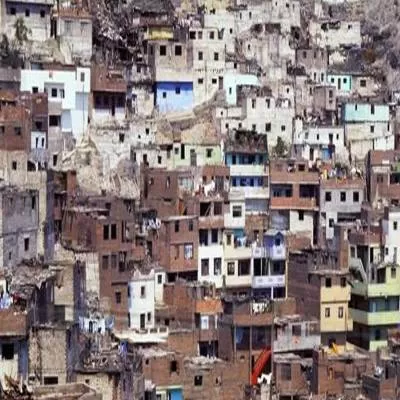
Mumbai, April 2 -- The identification of beneficiaries under Pradhan Mantri Awaas Yojana Gramin (PMAY-G) is based on housing deprivation parameters and exclusion criteria set by the Socio-Economic Caste Census (SECC) 2011. Verification by Gram Sabhas and an appellate process ensures that only eligible households receive assistance. These criteria have been applied to SECC 2011 data and Awaas+ 2018 to determine beneficiaries.
The Union Cabinet has approved an extension of PMAY-G for five more years, from FY 2024-25 to 2028-29, aiming to provide assistance for the construction of two crore additional rural houses. The Cabinet has also sanctioned the updating of the Awaas+ List using modified exclusion criteria. A new survey is underway across states and union territories using advanced technology, including e-KYC with face authentication, to enhance transparency and accuracy from identification to house completion.
To support this, the Awaas+ 2024 app has been introduced, featuring assisted surveys by pre-registered surveyors, housing technology selection, Aadhaar-based e-KYC, face authentication, and geo-tagged photos of existing homes and proposed construction sites. The app functions in both online and offline modes, and eligible households can also conduct a self-survey for the next phase of PMAY-G (2024-29).
AI and machine learning models are being used to curb fraudulent activities and detect malpractices. A recommendation system assesses house attributes such as roofing, walls, windows, and doors from uploaded photos and selects a final photograph for approval. The app also includes a liveliness detection feature, verifying beneficiaries through eye blink or motion detection. Payments under PMAY-G are Aadhaar-based and transferred directly to beneficiaries' accounts.
As per Cabinet approval, the current unit assistance stands at ?1.20 lakh for houses in plain areas and ?1.30 lakh for houses in North Eastern and hilly states, including Jammu and Kashmir and Ladakh. The funding pattern for North Eastern and Himalayan states follows a 90:10 ratio between the Centre and the state, while for other states, it is 60:40. Union territories without legislatures receive 100% funding from the Centre.
Additionally, beneficiaries receive support through 90 to 95 days of unskilled labour wages under the Mahatma Gandhi National Rural Employment Guarantee Scheme (MGNREGS). A financial grant of ?12,000 for toilet construction is provided through Swachh Bharat Mission - Gramin (SBM-G), MGNREGS, or other dedicated funding sources. Some states and union territories also provide additional financial assistance beyond the unit support to further aid house construction.
To enhance affordability, PMAY-G incorporates state-specific housing designs and promotes the use of locally available materials, reducing costs and environmental impact. The scheme encourages convergence with other government initiatives, providing beneficiaries with access to piped drinking water, electricity, LPG gas connections, solar lanterns, and clean cooking energy. Linkages with self-help groups (SHGs) under government livelihood programs further support economic empowerment.
These measures reinforce the government's commitment to transparency, efficiency, and ensuring that rural households benefit from sustainable housing solutions. Minister of State for Rural Development, Dr. Chandra Sekhar Pemmasani, shared this information in a written reply in the Lok Sabha.
Published by HT Digital Content Services with permission from Construction World.
